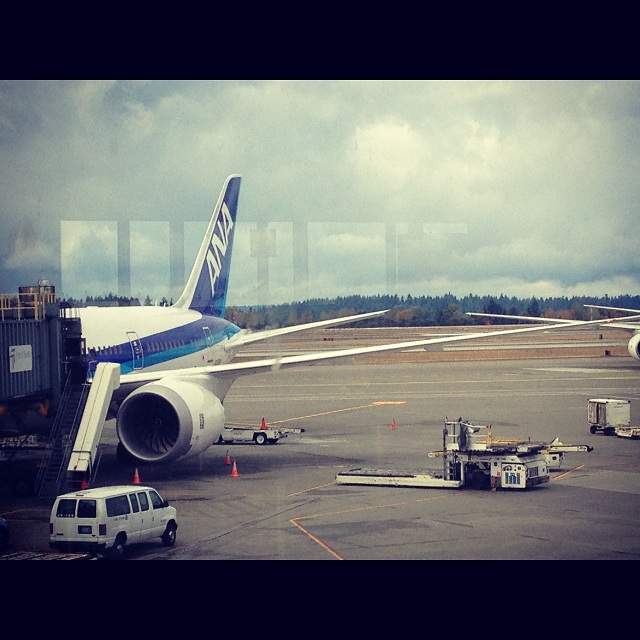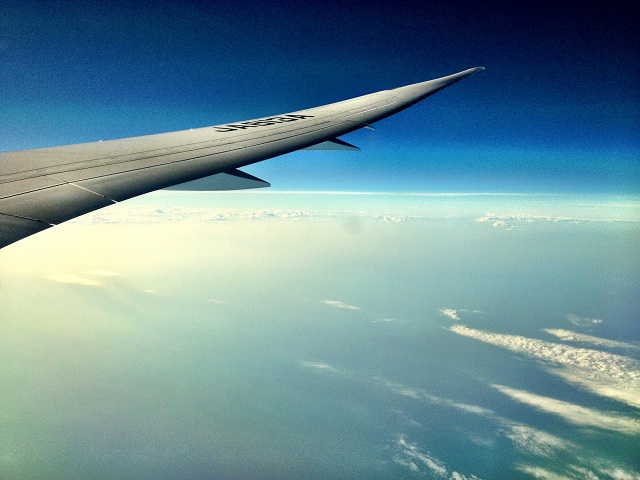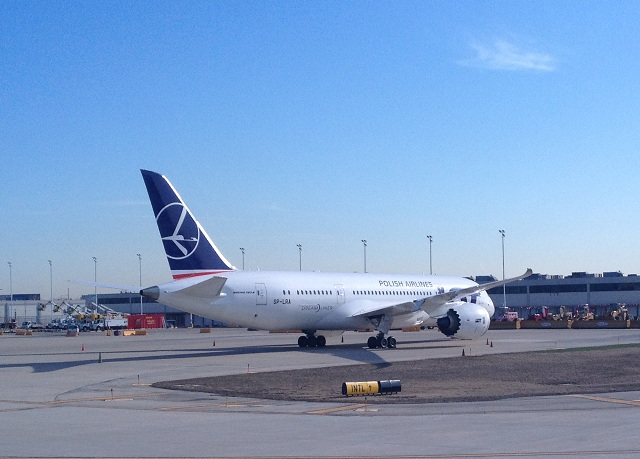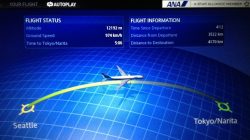
Above: All Nippon Airways JA813A, a 787 I flew from Seattle to Tokyo on October 25, 2012, prior to the aircraft’s grounding. Photo taken by me @SeaTac airport
No-going for Boeing
It’s been nearly a decade since Boeing Co. unveiled cutting-edge plans to launch the Boeing 787 Dream Liner, the most technologically advanced passenger aircraft to date.
However, since then, the ride has been hellish, at best, for Boeing, global airlines and passengers alike.
After years of numerous delays, painful setbacks, labor strikes and mechanical mishaps, the aircraft finally completed its maiden flight on December 15, 2009 and entered commercial service in September 2011. It seemed like the dark days were finally over.
During the months that followed, global airlines from Chile to Qatar, Ethiopia to Japan, among others, gradually received their (very delayed) 787 deliveries like children deprived several years worth of Christmas and birthday toys. For them, the cost savings that the 787 promised, in the form of fuel and energy efficiencies, couldn’t come sooner given the volatile nature of oil prices and the worldwide recession.
Then, on January 16, 2013, (coincidentally, my birthday), the universe struck back: following a slew of incidences reported on the 787, including two fires, several oil and fuel leaks, a cracked windshield, and false warnings from an electrical panel, the US Federal Aviation Administration grounded the entire fleet, and regulatory authorities from other countries followed in its footsteps.
This was a pretty big day in the history of global aviation. It was the first time in three decades that the FAA grounded a major commercial aircraft. Thirty-four years prior, in 1979, the FAA mandated a similar action against manufacturer McDonnell Douglas’ DC-10 aircraft, following a series of fatal accidents on the widebody jet that claimed over 500 lives throughout the 1970’s.
Fortunately, the 787 has not had a single fatal incident to date since taking flight, but the chain of dramatic events has still been pretty ugly, not to mention costly, for the Chicago-based company.

Above: shot of the raked wingtip on the 787, one of its key distinguishing features, taken aboard ANA flight 1077 from Seattle to Tokyo by me, October 25, 2012. This was just before making landfall on the Japanese coastline.
What happened?
At the time of its grounding, the Boeing 787 had eight global carriers* with the aircraft in service:
- Air India
- All Nippon Airways (ANA)
- Ethiopian Airlines
- Japan Airlines (JAL)
- LAN Airlines
- LOT Polish Airlines
- Qatar Airways
- United Airlines
*Note: Norwegian and Thomson Airways were also scheduled to be 787 operators this spring, but had postponed launch flights until after the FAA grounding, according to airlineroute.com
The major selling points of the Dream Liner were found in its structural engineering: it was the first aircraft fuselage built entirely of lightweight composite materials, reducing aircraft weight and fuel burn. Additionally, it was the first jetliner fitted with rechargeable lithium-ion main power batteries, which are lighter and smaller than nickle-cadmium traditionally used on commercial planes, allowing the 787 to store more energy.
For major network airlines, the economic advantages of the 787 had been unfathomable to date, and would modernize their fleets drastically. Some airlines, such as Air India, would achieve major cost savings by deploying the aircraft on existing routes that needed fewer seats, while also optimizing profit margins and yields. Other airlines, such as Japan airlines, would find immense strategic use in using the 787 to launch new routes to smaller markets from its primary hubs, such as from Tokyo to Boston. Prior to the advent of the 787, such cities had sufficient demand to generate service, but were too small to be served by larger aircraft without incurring major operating costs.
There are two identical lithium-ion batteries placed in the aircraft: one is stored near the front of the plane to power the cockpit’s electrical systems, while one is wired near the rear of the aircraft, and is used to start an auxiliary power unit while the plane is on the ground.
As it turns out, it was these batteries that became the problem children. In early January, two fire incidences were reported: one involved the front battery on an ANA 787 in Japan and another involved the rear battery on a JAL 787 in Boston. After conducting a comprehensive review, the FAA mandated the aircraft grounding until the batteries were proven safe to operate.

LOT Polish Airlines has two 787s, one of which is parked at its home base in Warsaw, the other is stranded in Chicago, which is seen here (registration SP-LRA). LOT’s inaugural flight to Chicago was on January 16, the day of the grounding, and needs permission from the European Aviation Safety Agency in order to leave US soil and return back to Poland. Photo taken by me @ ORD, April 4, 2013.
A “black-eye” for Boeing
It seemed like a basic scientific principle had been overlooked. Lithium ion battery packs are susceptible to overheating when exposed to a range of altitude and temperature changes, as would occur on a typical flight. Without a cooling element, the batteries, if damaged due to overheating, excessive charging, or manufacturing flaws, will catch fire.
The eye-brow raising component is that in spite of these flagrant risks, the prioritization on drilling home the benefits of fuel efficiency and cost savings far outweighed the importance of assessing the potential safety implications. It became immediately clear that the National Transportation Safety Board would need to investigate how and when the FAA certified these batteries as “safe” for operation, and why such a major lapse in judgment occurred that led to these safety breaches.
However, the more urgent need was to figure out a way to redesign the aircraft battery securely. For months, pressure mounted on Boeing to fix the flawed battery design. Speculation began to arise that in addition to the battery issues, the aircraft’s outsourced supply chain led to poor quality components coming in from subcontractors, resulting in severe lack of oversight and assurance.
Turning the corner
On Friday, April 19, it seemed like a breakthrough was ahead for the 787. The FAA approved Boeing’s solution to the thermal and electrical failures that caused the lithium-ion batteries to overheat on the two aforementioned 787s. The turnaround plan entailed authorizing airlines to install an improved battery, rumored to be encased in a steel box to provide better venting and prevent overheating. Additionally, the plan called for the installation of new battery chargers and adding a duct to vent gases outside the aircraft in the event of overheating.
Boeing dispatched ten teams of 30 engineers have been dispersed worldwide to make these installations on the grounded fleet. Boeing amassed 300,000 labor hours were required to re-certify the 787 with the new batteries, and that each battery modification will take 5 days to install per aircraft.
Still, major hurdles are yet to be cleared. While airlines are eager to get the 787 back in the air, many plan to undergo numerous hours of testing that will last several weeks. Others will need to wait for pilots to renew their licenses to operate the aircraft after three months of dormancy.
However, one thing is for certain: the grounding does underscore the major leaps and bounds global transport has made with regards to air safety. A universal investigation no longer requires a major accident, nor human toll, before taking place, despite the huge fiscal implications of deeming an aircraft unsafe for flight.
The next few weeks will definitely provide the public with more answers and information.
Stay tuned for part II, where I will discuss the next sequences of events in terms of which airlines will fly the 787 first, and expected timeframes for re-entry into service.


